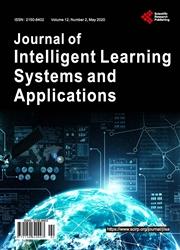A Comparison of Neural Classifiers for Graffiti Recognition
引用次数: 7
Abstract
Technological advances and the enormous flood of papers have motivated many researchers and companies to innovate new technologies. In particular, handwriting recognition is a very useful technology to support applications like electronic books (eBooks), post code readers (that sort mails in post offices), and some bank applications. This paper proposes three systems to discriminate handwritten graffiti digits (0 to 9) and some commands with different architectures and abilities. It introduces three classifiers, namely single neural network (SNN) classifier, parallel neural networks (PNN) classifier and tree-structured neural network (TSNN) classifier. The three classifiers have been designed through adopting feed forward neural networks. In order to optimize the network parameters (connection weights), the back-propagation algorithm has been used. Several architectures are applied and examined to present a comparative study about these three systems from different perspectives. The research focuses on examining their accuracy, flexibility and scalability. The paper presents an analytical study about the impacts of three factors on the accuracy of the systems and behavior of the neural networks in terms of the number of the hidden neurons, the model of the activation functions and the learning rate. Therefore, future directions have been considered significantly in this paper through designing particularly flexible systems that allow adding many more classes in the future without retraining the current neural networks.用于涂鸦识别的神经分类器的比较
技术的进步和大量的论文促使许多研究人员和公司创新新技术。特别是,手写识别是一种非常有用的技术,可以支持电子书、邮政编码阅读器(在邮局对邮件进行分类)和一些银行应用程序等应用程序。本文提出了三种识别手写涂鸦数字(0 ~ 9)的系统和一些具有不同架构和能力的命令。介绍了三种分类器,即单神经网络(SNN)分类器、并行神经网络(PNN)分类器和树状神经网络(TSNN)分类器。这三种分类器均采用前馈神经网络设计。为了优化网络参数(连接权值),采用了反向传播算法。本文应用并考察了几种架构,从不同的角度对这三种系统进行了比较研究。研究的重点是检验它们的准确性、灵活性和可扩展性。本文从隐藏神经元数量、激活函数模型和学习率三个方面分析研究了三个因素对系统精度和神经网络行为的影响。因此,本文通过设计特别灵活的系统来考虑未来的方向,这些系统允许在未来添加更多的类,而无需重新训练当前的神经网络。
本文章由计算机程序翻译,如有差异,请以英文原文为准。
求助全文
约1分钟内获得全文
求助全文

 求助内容:
求助内容: 应助结果提醒方式:
应助结果提醒方式:


